To run a contact center that’s both efficient and cost-effective, you need to align people, processes, and resources with the company’s key business objectives.
Workforce management (WFM) is crucial for the success of any call center. But building out a WFM function is often easier said than done, especially without the right tools or frameworks.
In this article, we’ll cover the main components of workforce management for call centers and walk through how to impact these metrics—including top WFM software tools to consider.
This article contains:
(click on the links below to jump to a specific section)
- What is call center workforce management?
- How WFM teams can measure and impact call center metrics
- 8 WFM software tools to improve call center operations
Let’s get started.
What is call center workforce management?
Workforce management in a call center is a set of ongoing internal processes that help ensure:
- Round-the-clock availability of skilled workforce.
- Efficient workload distribution among agents.
- Productive and motivated workforce.
- Excellent customer service at minimum costs.
A workforce management cycle usually involves the following components:
1. Forecasting
A call center may experience regular fluctuations in call volumes due to external factors.
If a call center doesn’t have enough agents during heavy call inflow, it may lead to long waiting queues and an unsatisfactory customer experience. On the other hand, overstaffing results in poor resource management and added costs.
Accurate forecasting helps managers or WFM analysts plan ahead by accurately predicting the workload and staffing needs.
They usually consider factors like:
- Historical data to identify low and high call volume periods.
- Changing business and consumer trends.
- New product or service launch.
- Special events or holidays.
- Equipment failure, bad weather, and other such contingencies.
2. Agent scheduling and assigning
After anticipating the staffing requirements, the WFM team creates agent schedules by determining the time and duration of the shifts.
The scheduling and assigning process has three main objectives:
- Determine how many agents are required during each shift.
- Design shift patterns such as fixed, flexible, or rotating shifts based on the expected call volumes and agent availability.
- Shortlist agents with the right skill set and assign them to a shift.
Advanced WFM software uses technologies such as call pattern analysis and skills based routing to assign agents most suitable for the job.
3. Intraday management
The WFM team constantly monitors real-time call data to ensure everything goes as per the schedule and there are enough agents to meet customer demand.
However, despite thorough planning, a call center team may face scenarios that could affect their service level.
There could be an unexpected workforce shortage due to employee absenteeism or poor schedule adherence by the agents.
There could also be sudden spikes in the volume of inbound calls due to:
- Product recalls.
- Power outage or technical system failures.
- Floods, earthquakes, or other natural disasters.
- Civil unrest.
- Disruption in public transport.
Intraday management involves taking reactive measures to restore normal functioning and the service level.
Some of these measures include:
- Reassessing the workforce requirements and priorities.
- Bringing in additional workforce to meet the customer demand.
- Scaling up the resources.
- Creating a customer self-help portal to ease call volumes.
Intraday management practices help restore the call center operations after a disruptive event has taken place.
However, it’s a good practice for a call center or contact center to prepare for such events in advance and develop a solid business continuity plan.
Your WFM team must identify as many such disruptive scenarios and come up with preventive measures. Additionally, they must create an SOP (standard operating procedure) for each one of them.
4. Performance management
For many call centers, performance management is a part of WFM rather than a separate quality management system.
The main goal of performance management is to monitor agent performance and help them improve over time.
To get a clear insight into agent performance, an operations manager or a WFM analyst regularly tracks metrics such as:
- First call resolution (FCR)
- Average handle time (AHT).
- Occupancy rate.
- Schedule adherence, etc.
Once they identify a productivity or performance issue, they can give actionable feedback to the agents or ask them to undergo additional training.
How WFM teams can measure and impact call center metrics
To execute these processes efficiently, WFM teams need goals that align with the components above. Lets look at how call center managers can measure and impact key performance indicators (KPIs).
Cost management
With more historical data and keener knowledge of consumer trends, managers can develop more informed call center forecasts. Using that data, they can ensure enough they have the right number of agents without over-scheduling.
Greater forecast accuracy typically means better cost management. Experienced contact center managers can use dedicated tools (see below) to forecast needs and estimate costs.
Customer satisfaction
Cutting costs too much can lead to lengthy answer times and high rates of call abandonment. Both of these factors can cause customer satisfaction scores (CSAT) to plummet.
With dedicated call center software, managers can measure CSAT and related metrics like net promoter score (NPS) automatically. Then they can balance these success metrics with budget needs.
Operational efficiency
When workdays go smoothly and forecasts prove accurate, call centers can run efficiently. But when unexpected scenarios arise, call center managers need a plan B.
Tracking preparation measures like SOPs and business continuity plans is the first step. Managers can also use WFM tools to set benchmarks and identify inefficiencies that require resolution.
Agent retention
Contact center agents with predictable schedules, manageable workloads, and opportunities to grow tend to be happy employees. Managers can impact these outcomes with tactics like automatic call distribution and skill-based routing.
Managers can also use workforce management software to track agent engagement KPIs. Naturally, higher engagement rates often correlate with higher retention, which ties into cost management and operational efficiency.
8 WFM software tools to improve call center operations
The right WFM software can help you run your contact center more efficiently, improve budget forecasting, and lead to happier call center agents. Use the tools below to manage key call center components.
1. Time Doctor

Time Doctor is a workday analytics platform designed for outsourced contact centers. It’s designed to help managers make smarter scheduling decisions and encourage agents to work more efficiently.
With Time Doctor, call center managers can plan schedules and check for adherence. Attendance reports show agent arrivals, while the platform’s time tracking features monitor their daily tasks.
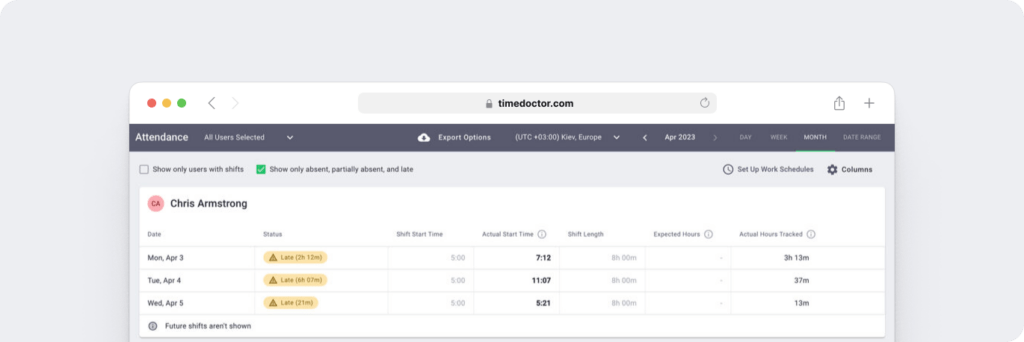
Time Doctor automatically tracks the websites and apps agents use during the workday, offering greater insight into their habits and workflows. The platform also tracks productive versus unproductive tasks.
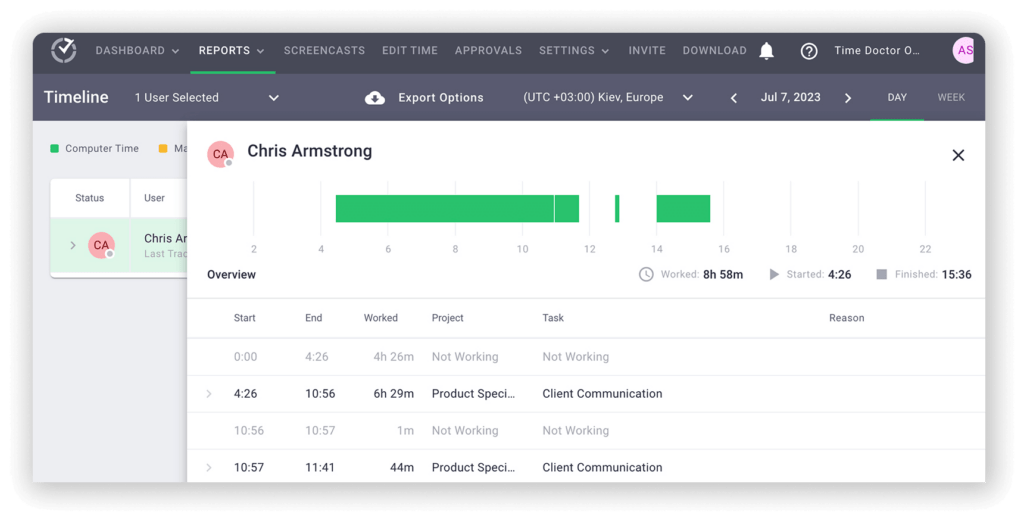
With these productivity insights, managers can make data-driven decisions about project assignments and agent scheduling. Managers can use these insights to find top-performing agents and reverse-engineer their processes.
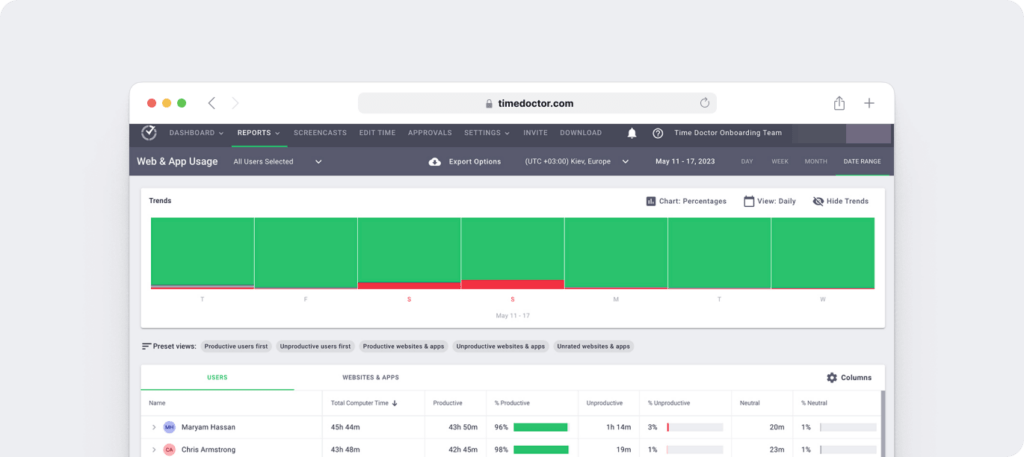
These insights can also reveal agents who are likely to be overworked or struggling with their workloads. Using Time Doctor’s insights, managers can take steps to improve engagement, resolve work-life balance issues, and increase agent retention.
Best for: Outsourced call centers that need cost-effective agent scheduling and productivity analytics.
Pricing: Starts at $5.90/user per month when billed annually.
2. Assembled
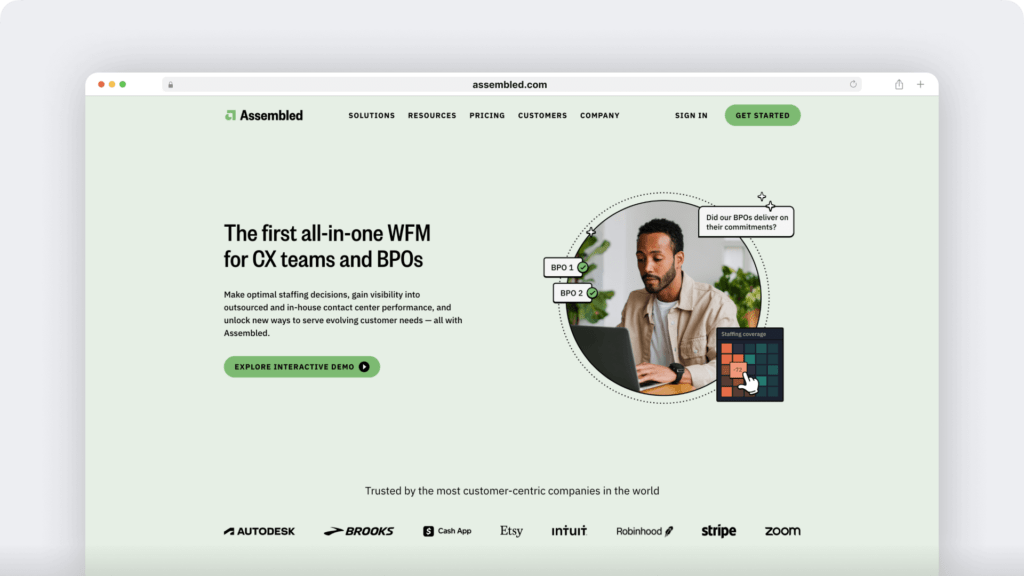
Assembled is a WFM platform for customer experience (CX) teams. The software is designed to help managers make better staffing decisions by offering visibility into call center teams.
Assembled offers call center forecasting and scheduling to ensure optimal agent coverage. The platform also provides performance management to keep agents engaged and performing at their peak.
Best for: CX teams with ambitious customer service and agent engagement KPIs.
Pricing: Contact sales.
3. Calabrio ONE
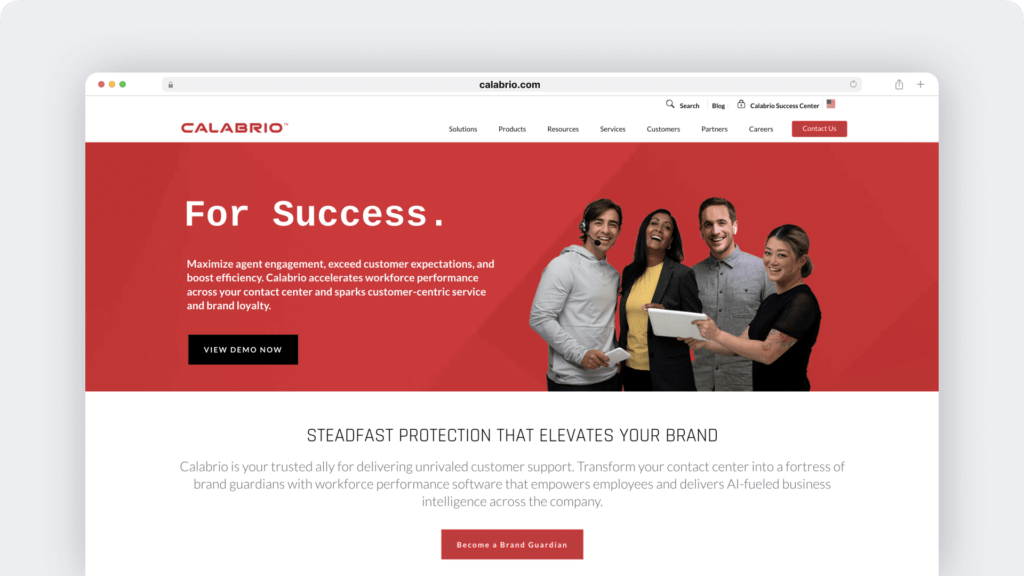
Calabrio ONE is a WFM solution designed for call centers. The software uses AI-powered tools to forecast call volume, generate agent schedules automatically, and generate reliable staffing models.
Calabrio also offers call center agent engagement features designed to improve retention. The platform’s reporting tools can help managers stay on top of KPIs and improve operational efficiency.
Best for: Contact centers that need an integrated solution with call recording and quality management.
Pricing: Contact sales.
4. Genesys Cloud CX
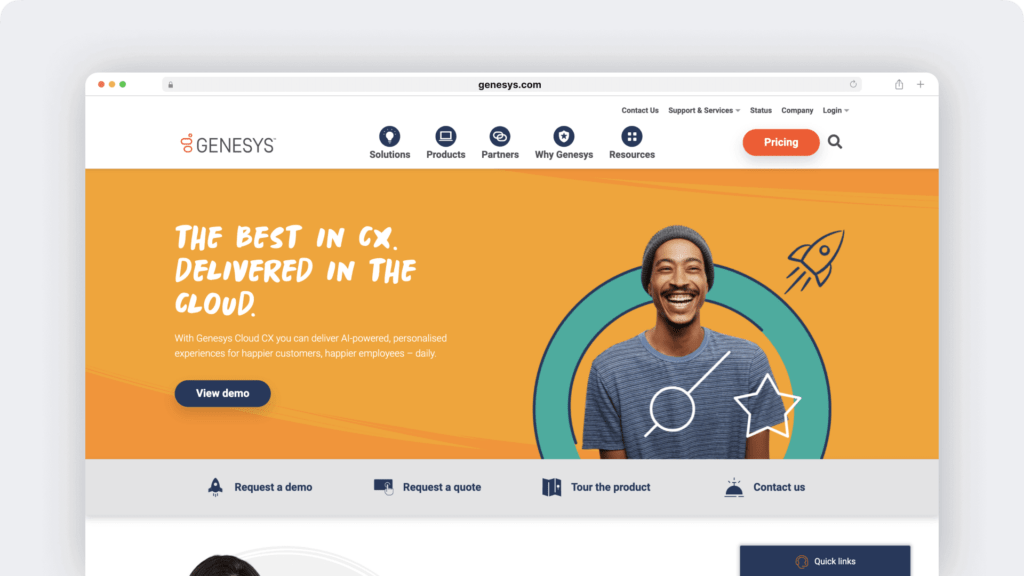
Genesys Cloud CX is an all-in-one cloud-based contact center solution that works across customer service channels. The software supports both CX and agent engagement.
Genesys Cloud CX supports both inbound routing and outbound outreach campaigns. The platform also offers robust analytics to help managers monitor call center performance.
Best for: Contact centers with both inbound and outbound agents.
Pricing: Starts at $75/user per month when billed annually.
5. NICE CXone
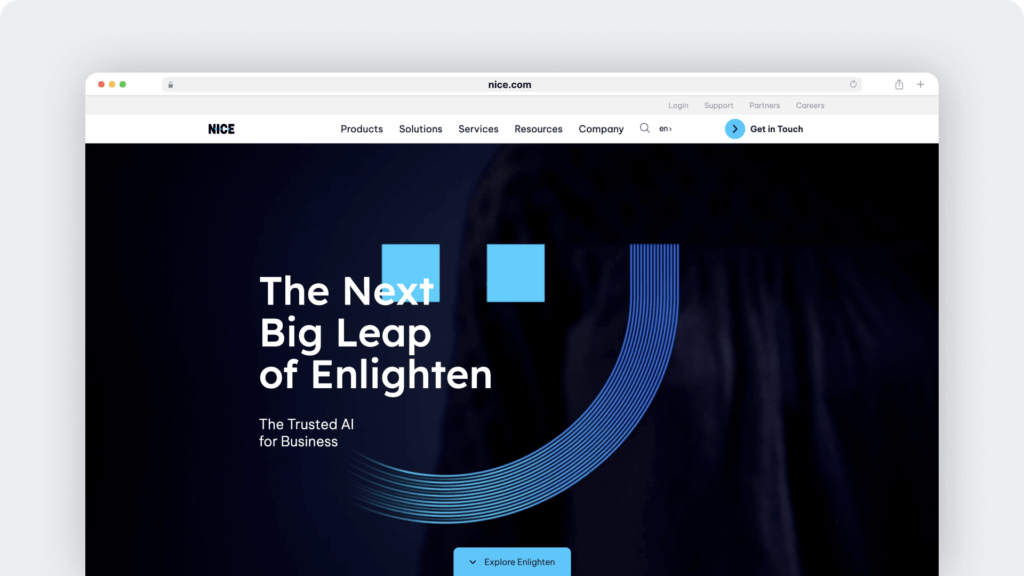
NICE CXone is a suite of software tools for contact centers. The platform’s WFM software is designed to increase forecasting accuracy, improve call center agent engagement, and give managers the flexibility they need to adjust plans.
NICE CXone is engineered to optimize the efforts of contact center workforces. The platform uses AI to help agents work better and help managers run more cost-effective call centers.
Best for: Enterprise users that need an integrated set of contact center solutions.
Pricing: Starts at $100/user per month.
6. Playvox
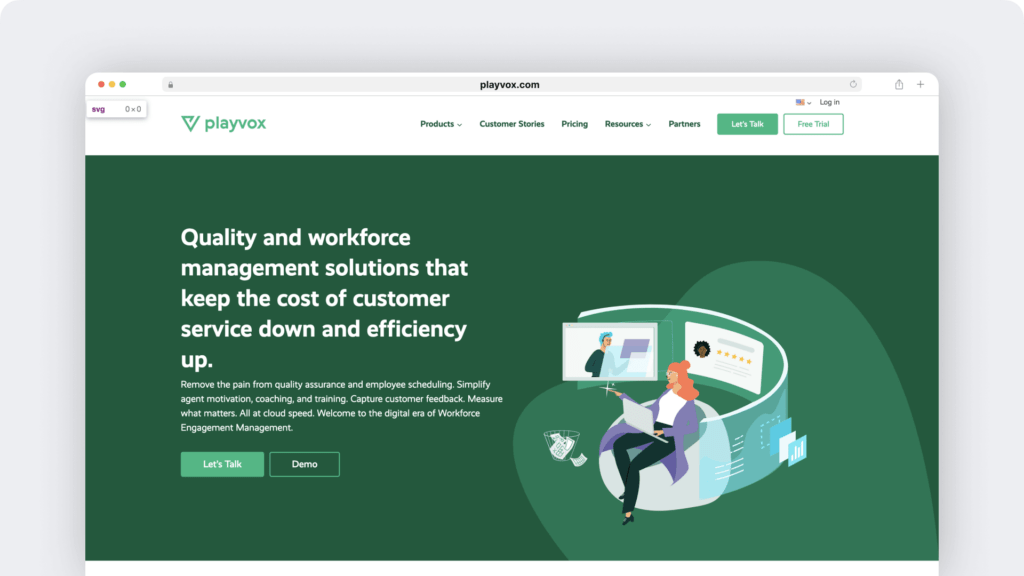
Playvox is a WFM platform that uses AI-powered tools for capacity planning, call forecasting, and agent scheduling. The software also offers intraday management to assist with irregular operations.
Playvox provides omnichannel support and can forecast customer volume across channels. The platform also includes performance metrics that agents can use to improve their own performance.
Best for: CX organizations that need to manage omnichannel customer service.
Pricing: Contact sales.
7. Talkdesk
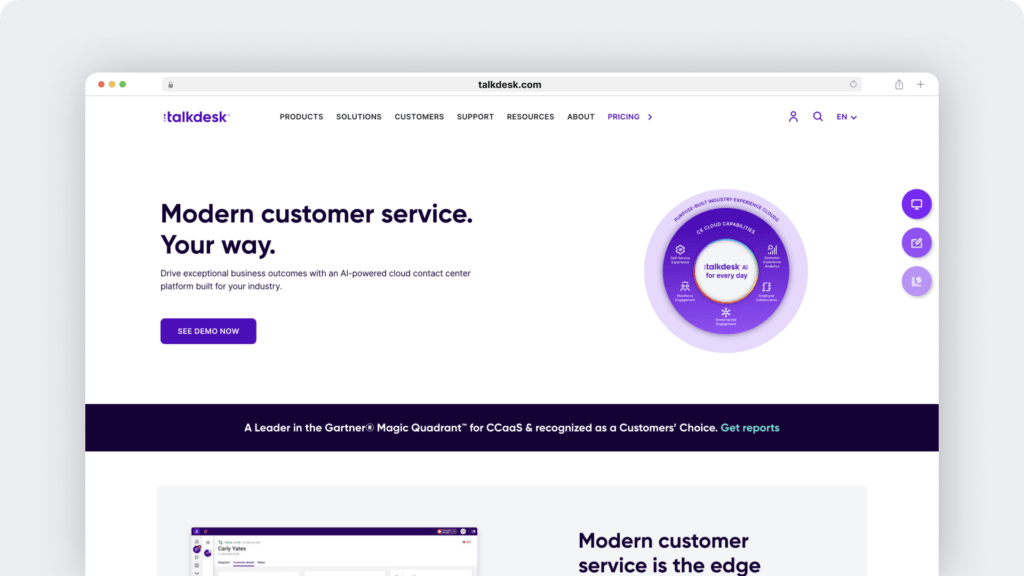
Talkdesk is a contact center software platform with an optional workforce management add-on. The platform offers CX analytics, omnichannel engagement, and workforce engagement.
Talkdesk’s WFM add-on uses AI and automation to improve forecasting, staffing, and administration. The WFM feature can also predict performance metrics to keep call centers on track to reach KPIs.
Best for: Contact centers in healthcare, financial services, and retail industries.
Pricing: Starts at $75/user per month, and plans that support WFM start at $125/user per month.
8. Tymeshift
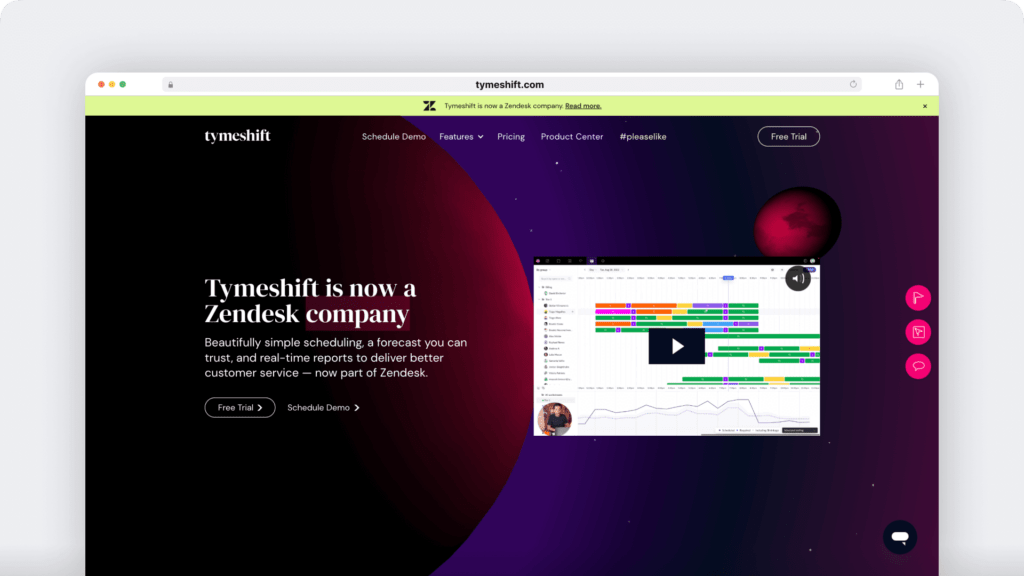
Tymeshift is a Zendesk app that provides call center forecasting and scheduling. The software uses historical data to estimate agent needs and builds cost-effective schedules.
Tymeshift gives call center managers real-time insights into agent activity and attendance. As a manager, you can check schedule adherence and monitor agent performance.
Best for: Contact centers that use Zendesk to manage customer service or sales teams.
Pricing: Free plan available, and paid plans start at $15/user per month when billed annually.
Get started with call center workforce management software
Call center workforce management is simpler and more efficient with the right software. With Time Doctor, you can keep your contact center running smoothly by managing everything from scheduling and time tracking to reporting and payroll. Curious how our workday analytics work for outsourced contact centers? Book a Time Doctor demo and see the platform in action.

Andy is a technology & marketing leader who has delivered award-winning and world-first experiences.


